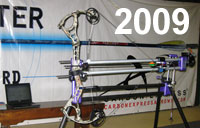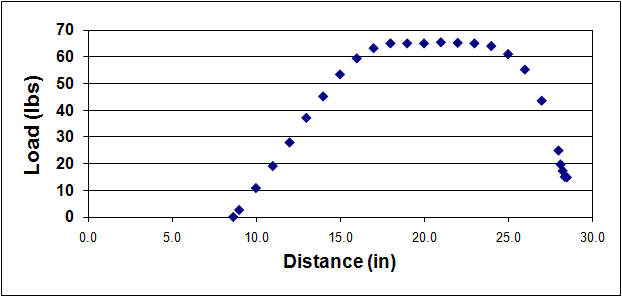Diamond IceMan
Personal Commentary by Jon Silks about the Diamond IceMan:
The IceMan hit an impressive #3 spot in the balance and feel category and with good reason. The bow balances well and has a comfortably shaped grip with wood side panels that are blended nicely and the overall size is a good compromise between slender and full. A stiff draw cycle with consistent transitions gave the IceMan its lowest showing in the subjective categories at #4. Ranking at least #4 or better in all categories gave the Diamond rig an impressive #2 position overall in the subjective categories and a #3 position overall with speed factored in. If anything could hold the IceMan back it would have to be the speed as it came in next to last. The IceMan was top dog in the shock/vibration category registering a surprisingly low measure of either. Many testers were compelled to comment on this quality as the testing progressed.
|
 |
||||||||||||||
Using this Table: Kinetic Energy: (in foot-pounds)
This is the energy that actually goes into propelling the arrow. Basically it is the energy that is left over from the stored energy after all of the bow system friction is accounted for. |
|||||||||||||||
Using This Graph: The area under the graph signifies the amount of energy stored by the system from brace height to full draw (power stroke). The shape of the curve is generated by a plot of draw weight in pounds against draw length in inches and gives an indication of how the bow will feel when drawn. The more rounded the curve the more "smooth" the feel of the draw cycle, however, if the curve is "squared-off" it will likely feel more aggressive. The trade off comes in performance, as the more aggressive curve is generally indicitive of more stored energy and more speed.
|
|||||||||||||||










